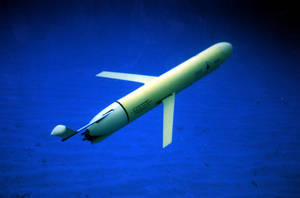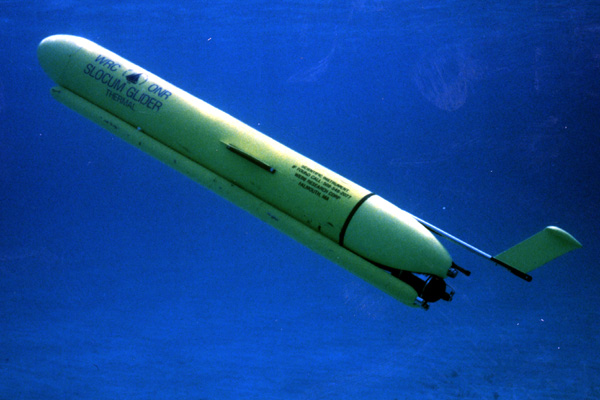It is often said that we have seen more of the surface of Mars than we have of our own planet. This is because 2/3 of our planet is covered with ocean, which is opaque to most of the forms of light we use to find out so much about the land with. You can send probes down to visit the bottom of the ocean but this requires a hugely expensive ship on the surface to power them and move them around.
 |
| A thermal glider surfacing. The Tubes underneath contain the © Webb Research |
Various groups have come up with a way of moving autonomous robots around the oceans powered by the water itself. If you throw a paper aeroplane, it falls down, but because of its aerodynamic shape it doesn't fall vertically it glides down following a diagonal course powered by its potential energy. You can do the same thing in the ocean so if you sink 4km you can glide up to 20km forwards, you then have to stop as you have reached the bottom of the ocean, unless you can make yourself buoyant again, as you can then glide another 20km upwards, you can then work out where you are using GPS and communicate with your base station then, loose some buoyancy and sink again.
The problem is that you need energy to gain and loose the buoyancy required to float and sink which uses up power in your batteries. A company called Webb research has harnessed the difference in temperature at the top and bottom of the ocean to provide this energy and so power the glider.
Inside the glider they have tubes of wax which when it heats up near the surface expands compressing gas which is stored in a tank. The glider then allows oil to flow from a bladder outside into the body, reducing the glider's volume, making it sink. When it reaches a pre-set depth the compressed gas is used to push the oil back out again making the glider float back up to the surface.
 |  |
| The the thermal glider surfaced, where it could be communicating by satellite with its controllers. © Webb Research | A Slocum thermal glider gliding upwards © Webb Research |
The glider can also extract some electrical energy from this temperature difference by using peltier coolers in reverse so the test vehicle has so far travelled 1400km across the Virgin Islands Baisin in the West Indies, sinking and floating at least 20 times, moving at between 1 and 2 kph with no interference from outside.
In theory this vehicle should have a range of 40000km and only have to be picked up every 6 months or so giving us an unprecedented view of what is going on in the oceans.
References
- Previous Window into the Alzheimer's Brain
- Next Knee-d more power?




Comments
Add a comment